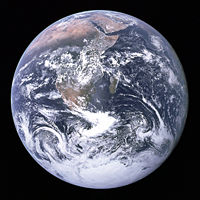Antarctic Animation
Animations are distributed under Creative Commons Copyright 3.0:
Attribution-Non-commercial-Share Alike license.
This website is being updated. Original animations made in Flash Shock Wave Format (.swf) are being replaced by .mp4 files

COMMENTS
Krill watching
Music for this animation is an improvised piano piece by Sophie Green, recorded in October 2010. She was 12 at the time. Three years before that she had improvised music which I recorded and used in the animation How do krill grow?
On 12 October 2010 artist Claire Beynon writes on her blog:
Yesterday, Lisa sent me a link to her most recent animation titled Krill Watching. I immediately thought, 'This is a poem; it's witty, tender, lyrical, balletic, playful and profound...' I asked her if I could post her her krill piece as my Tuesday Poem this week, and here it is...
Email responses:
The music and animations are sensitive, genuine and blend beautifully together. Nature's (and also humans) movements really has a musicality in its own structure and own value. The animation and music captures this in a authentic and attuned sense. I think about improvisation in movement from within, where inner structures forms gestures and postures in a flow.
Eva Tillberg, Dance therapist, Germany
That's lovely! It has a wonderful sense of both drifting and purpose. The music is very evocative. Never underestimate a 12 year old! Did you see the recent series "Life" on the ABC? The episode on undersea invertebrates was very beautiful: http://www.bbc.co.uk/programmes/b00p4rl4
Haydn Washington, Environmental scientist and activist, Sydney
Connectivity
I like the way you have picked up the quality of line, in my marks. I was very aware of experimenting with the pencil to try and explore it's range of marks.
Love the variety of line you picked up, the contrast between each of our marks, then the joining of all out work together. Your addition of fade and the movement, the growing of the line, the creation, is great it leaves lines in my mind.
Christine McMillan
Kandos, NSW, 9 July 2008
I have the sound of the animation in the background. It reminds me of being cold and on watch at 2:00am on a small semi-disabled yacht in the Atlantic with the wind mounting and the others asleep. I like the way the marks overlap like things barely seen through mist and rain or even tears.
Simon Pockley
Melbourne, 9 July 2008
This is coming along nicely. The final graph (glacial -interglacial cycles) needs a label to appear with it, as do the shaded columns marking the interglacials. I am sure you are doing this anyway. Amazing, isn't it, that the inerglacials represent such short perios of time. From these graphs one can really see that Earth is mostly in a glacial state, and that the interglacial in which we now live is a relatively unusal event; one that has allowed our civilisation to flourish.
I am glad you are seeing the beauty in the scientific data - these are incredible graphs that explain so much about the history of our planet and its ability to support us.
Dominic Hodgson
Cambridge, 16 May 2008
Navigate
Lisa
I'd say it's your best work to date. Nice repetition of the closely
related forms and a good recycling of the cycles. It's long enough to
enter into which makes a huge difference to the viewing reality.
John Hughes
Sydney, 11 January 2008
Building Mawson, 1955
The drawing of Mawson 1955 was made more as a record than a picture, but the superimposed figure did set me thinking. It seemed to be uncertain about where to place the blocks it was moving, just as we were in placing the first huts at the beginning of 1954. Then, nothing was really known about drift patterns except that the drift-bearing winds would more than likely be from the plateau. This proved to be the case with roof-high drift on the northerly side of the buildings.
In 1955 the size of the station was doubled with the new huts being sited in places which were; suitable for their use, not likely to be covered in drift from another up-wind building, doorways free of drift, and, of course,on a site where the building could be easily erected by a mob of mainly amateurs. The buildings in the picture fulfilled these criteria.
Isn't the brain an amazing organ, being able to accomplish so much from assimilating completely abstract notions, and transforming them into sensate form.
Fred Elliott
Melbourne, 10 January 2008
Masson Range [1955-2007]
The pen (?) drawing [Masson Range] with the highlighter on it and the words/questions round the edges is brilliant. I love that it looks like someone - either the artist or someone else just looking at the picture - is trying to make sense of what they are seeing, trying in some way to map their thoughts about what they are observing. Strange how putting a text into a particular context can imbue it with meaning that doesn't (or at least didn't/might not) exist outside of that context.
I love context. Understanding context liberates. In my teaching whenever we talk about putting a text into our own personal context, the understanding the kids get of the way other contexts affect meaning is much more powerful because we are doing what we are talking about.
Kathryn Yeo
Dubai, 23 December 2007
Ice forming (Home page)
Your ice formation animation is interesting. For me it faded too quickly to really appreciate the conversion from liquid to solid. And I guess from my Science background, I would like the process to be seen to be starting from the surface of the liquid in conformity with the facts. The density of pure water peaks at 4degC, so as a pool cools below that, all convection ceases, leaving further cooling to take place from the surface exposed to the air, and that's why ice forms from the top - which is just as well for all aquatic life forms!
A trickier thing to envisage is the metamorphosis of snow to ice in Antarctica. I simply do not know the science of this. But it would make for beautiful animation as each snow crystal starts out different, and the ultimate ice block is an amorphous mass, giving off that magical blue-green hue from the passage of sunlight. I suspect the slight colour changes are related to the degree of compression, and of course the whole process is integral in our mapping of climate change, since it's the ancient air bubbles trapped in the ice which allow us to chart Gaia's atmosphere going back millions of years.
Bill Burch
Sydney, 29 November 2007
On Sunday 27th July 2008 I find this reference to the Gaia hypothesis in Wikipedia:
The Gaia hypothesis is an ecological hypothesis proposing that the biosphere and the physical components of the Earth (atmosphere, cryosphere, hydrosphere and lithosphere) are coupled to form a complex interacting system. This coordinated system of living organisms maintains the climatic and biogeochemical conditions on Earth in a preferred homeostasis. Named after the Greek Titan of the earth, the hypothesis is frequently described as viewing the Earth as a single organism.
The study of planetary habitability is partly based upon extrapolation from knowledge of the Earth's conditions, as the Earth is the only planet currently known to harbour life. The release of this image prompted the formulation of the proposition that the Earth was alive, and fostered acceptance of that proposition:

Earth seen from Apollo. NASA
The notion of Earth as a living organism is ancient, and finds new expression in the voices of today's space and polar explorers. Like cosmonauts, Arctic and Antarctic venturers can describe Earth from greater distances than are possible for most people. They can see our planet as something huge of which we are each but a part, and that yet collectively we are rapidly devastating our own habitats on a massive scale. Such extreme perspectives as those of Astronimic and Polar scientists are vital for us to know, intellectually and emotionally, how we must change how we all live. Science investigating Earth changes is happening at both Earth Poles. We are told that the Arctic is rapidly melting, and will soon be an inland sea. Antarctica is unique in being a vast continent, and the most accessible landscape from which we can view beyond our Earthbound selves. Antarctica is a vantage point from which to research changes in its physical landscape that indicate changes all around the globe. In Antarctica you can hear the voices of some whose inner landscapes have changed from working there. Standing at such an extreme vantage point as Antarctica, they have found inner connectins with the physical landscape that stay with them after they leave, and that have influenced how they live their lives back home.
Ice sound
Iceberg
When frozen
Their shape is sharp
Jagged edges slicing.
Giant icebergs growing
In coldness of oceanic minds
Only tips emerge, the purity submerged
hollow jagged cathedrals of alabaster white
an ethereal blue entices lustre of buoyant mountains
Floating further from home, murmurs and temperature
hairline cracks, a spectre of majestic purity
fracturing and splintering, becoming
contextual representations.
Melting, deliquesce
Lost in lilac
Raw untamed
Thoughts contained
Within shapes, products
of the imagination, restricted
by the confines of language, words.
The true purity of unsubjected thought hidden.
Behind carefully deranged symbols and punctuation
Complete communication of pure thought is impossible.
The global warming of thoughts into language. Smoothing
Edges and creases into a homogenous disembodied
thought, now easily manipulated within the
confines of language. Single streams
of once pure thoughts, now
linear, unrecognisable.
A. A. Davies
Sydney, 2007














